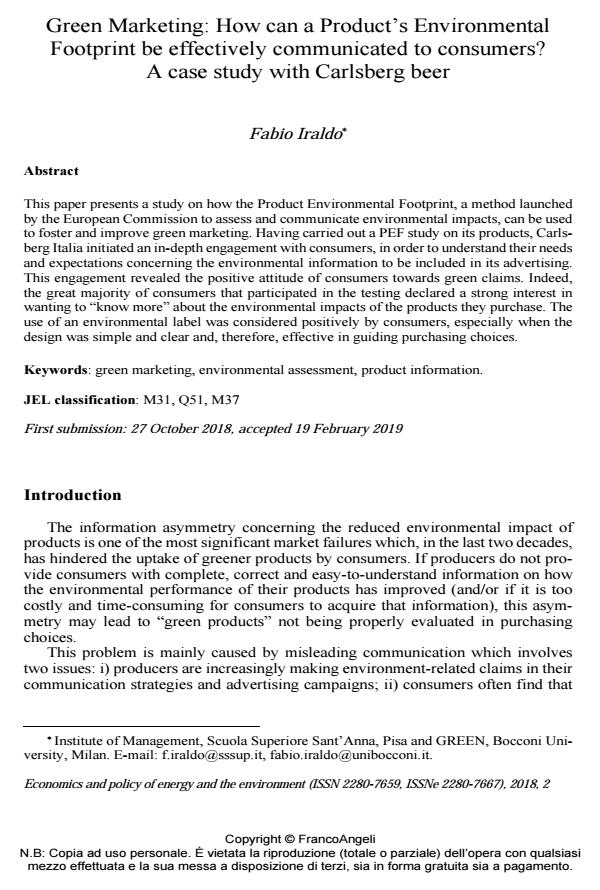Green Marketing: How can a Product’s Environmental Footprint be effectively communicated to consumers? A case study with Carlsberg beer
Journal title ECONOMICS AND POLICY OF ENERGY AND THE ENVIRONMENT
Author/s Fabio Iraldo
Publishing Year 2019 Issue 2018/2
Language English Pages 20 P. 167-186 File size 427 KB
DOI 10.3280/EFE2018-002009
DOI is like a bar code for intellectual property: to have more infomation
click here
Below, you can see the article first page
If you want to buy this article in PDF format, you can do it, following the instructions to buy download credits

FrancoAngeli is member of Publishers International Linking Association, Inc (PILA), a not-for-profit association which run the CrossRef service enabling links to and from online scholarly content.
This paper presents a study on how the Product Environmental Footprint, a method launched by the European Commission to assess and communicate environmental impacts, can be used to foster and improve green marketing. Having carried out a PEF study on its products, Carlsberg Italia initiated an in-depth engagement with consumers, in order to understand their needs and expectations concerning the environmental information to be included in its advertising. This engagement revealed the positive attitude of consumers towards green claims. Indeed, the great majority of consumers that participated in the testing declared a strong interest in wanting to "know more" about the environmental impacts of the products they purchase. The use of an environmental label was considered positively by consumers, especially when the design was simple and clear and, therefore, effective in guiding purchasing choices.
Keywords: Green marketing, environmental assessment, product information.
Jel codes: M31, Q51, M37
- Challenges with product environmental footprint: a systematic review Emil Pedersen, Arne Remmen, in The International Journal of Life Cycle Assessment /2022 pp.342
DOI: 10.1007/s11367-022-02022-3
Fabio Iraldo, Green Marketing: How can a Product’s Environmental Footprint be effectively communicated to consumers? A case study with Carlsberg beer in "ECONOMICS AND POLICY OF ENERGY AND THE ENVIRONMENT" 2/2018, pp 167-186, DOI: 10.3280/EFE2018-002009